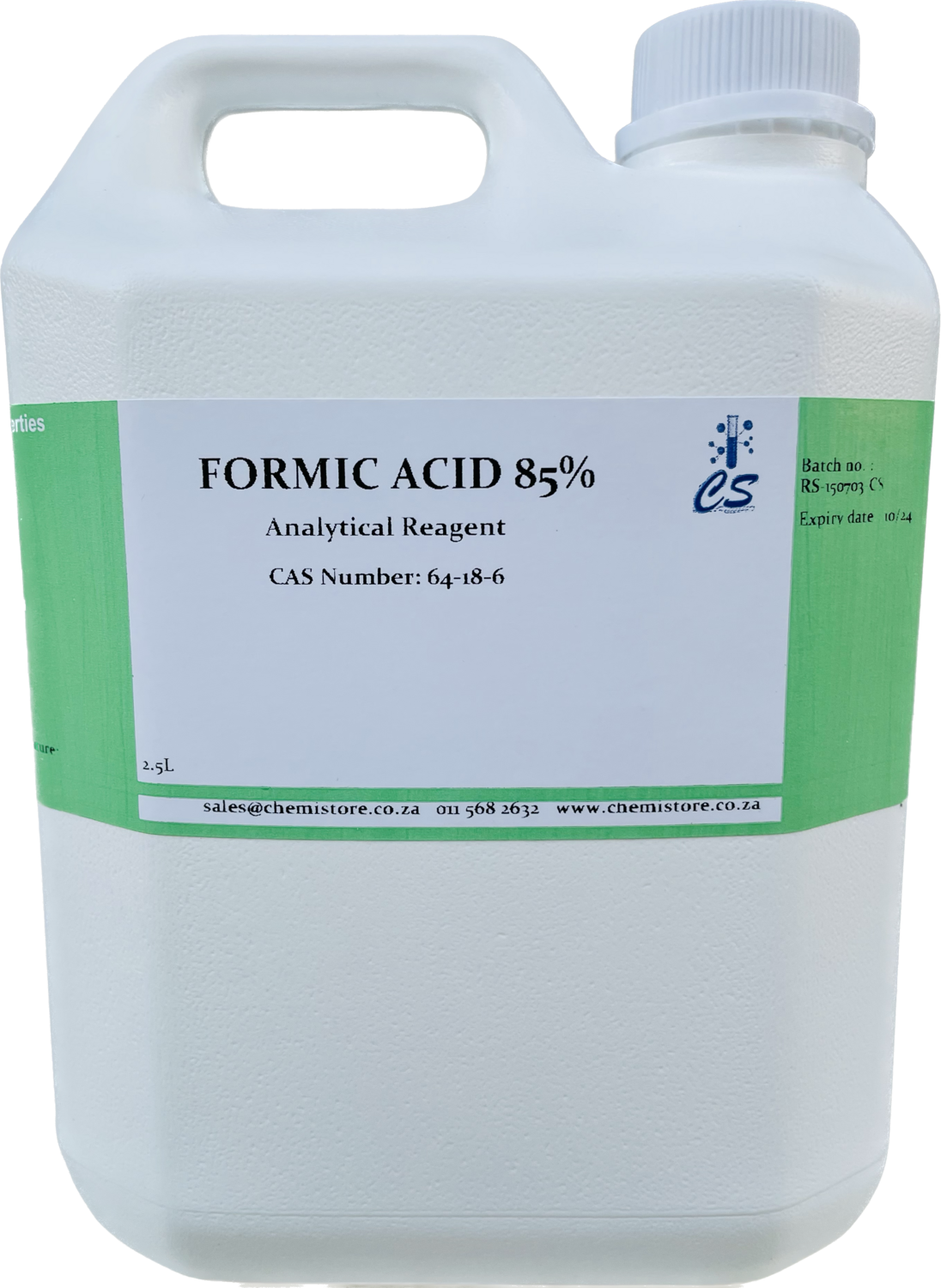Formic Acid 85% AR 2.5L
R251.22
1
Save this product for later
Formic Acid 85% AR 2.5L
Product Details
Chemical Safety
Molecular Formula
- HCOOH
Synonyms
- formic acid
- Methanoic acid
- 64-18-6
- Formylic acid
- Aminic acid
Molecular Weight
46.025 g/mol
Description
Formic acid appears as a colorless liquid with a pungent odor. Flash point 156 °F.
Formic acid is the simplest carboxylic acid, containing a single carbon. Occurs naturally in various sources including the venom of bee and ant stings, and is a useful organic synthetic reagent. Principally used as a preservative and antibacterial agent in livestock feed. Induces severe metabolic acidosis and ocular injury in human subjects. It has a role as an antibacterial agent, a protic solvent, a metabolite, a solvent and an astringent. It is a conjugate acid of a formate.
Formic acid (systematically called methanoic acid) is the simplest carboxylic acid. It is an important intermediate in chemical synthesis and occurs naturally, most famously in the venom of bee and ant stings. It is commonly used as a preservative and antibacterial agent in livestock feed.
Display prices in:ZAR


